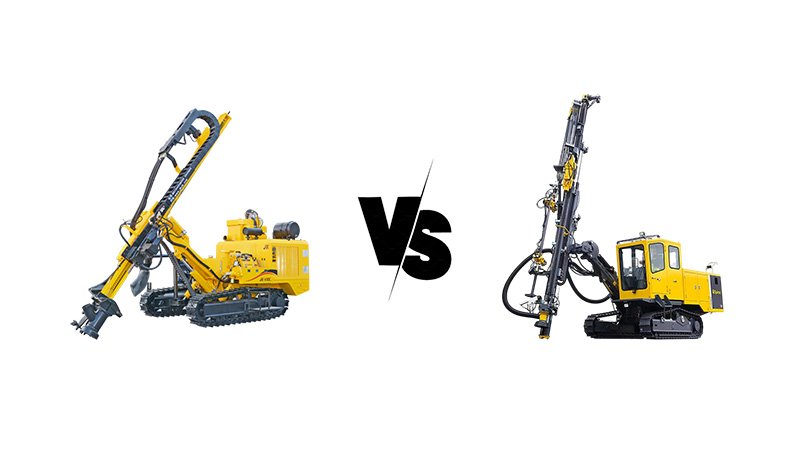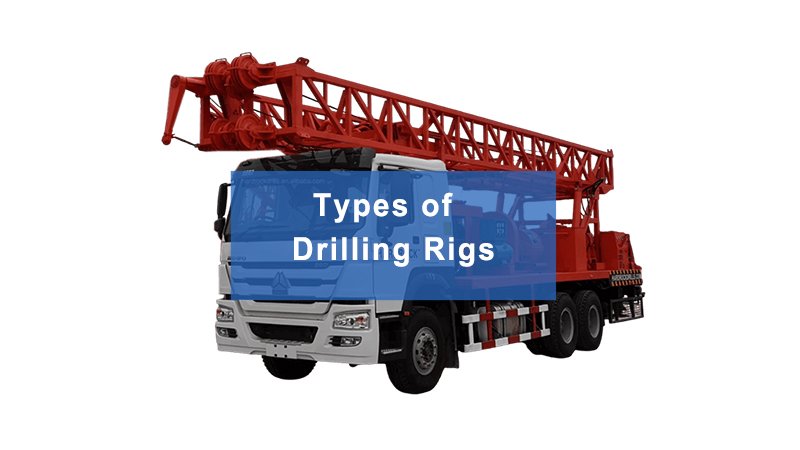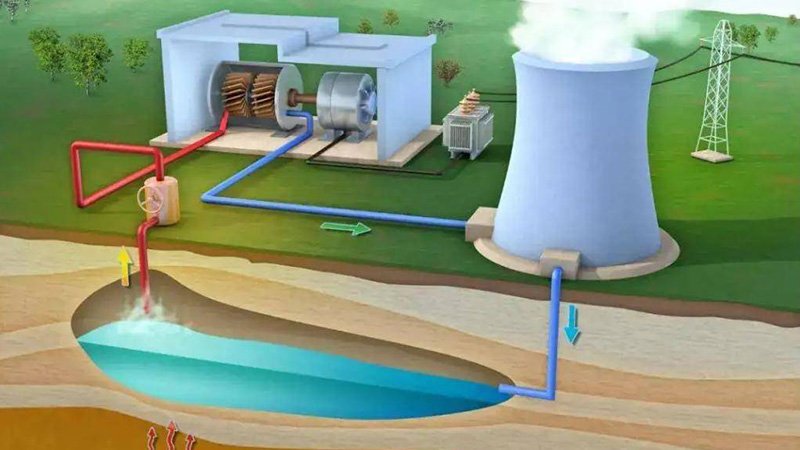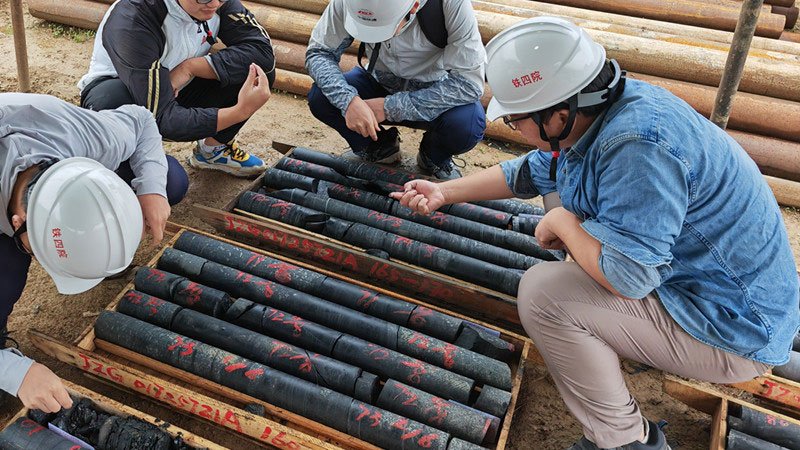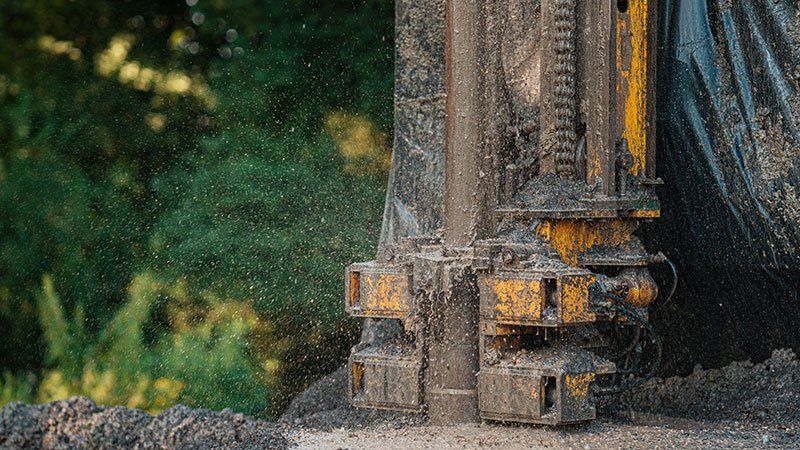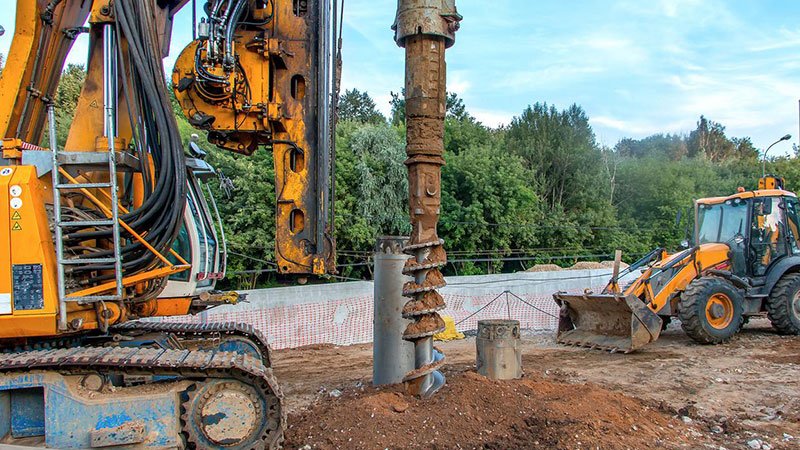Confused by borehole drilling machines? Choosing the wrong one can sink your project. This guide provides essential insights for success.
Borehole drilling machines are specialized equipment used to create deep, narrow holes in the earth for various purposes, including water extraction, geological exploration1, and construction foundation work.
Understanding borehole drilling machines is fundamental for anyone in construction, resource exploration, or water management. As I often tell my clients, like Mohammed Al-Rahman from the UAE, selecting the correct machine isn't just a technical choice; it's a business decision that impacts efficiency, cost, and safety. My insight is that choosing the right borehole drilling machine is critical to project success. Understanding its structure and application helps improve efficiency and ensure safety. Let's explore these powerful tools in more detail.
What Is a Borehole Drilling Machine?
Unsure what a borehole machine does? It's key to many projects, but how does it really work? Get the basic principles.
A borehole drilling machine uses a rotating drill bit2, thrust, and often fluid circulation to cut through earth and rock, creating a cylindrical hole known as a borehole.
At its core, a borehole drilling machine is designed to overcome the earth's resistance. Think of it as a very powerful, specialized drill. The process generally involves a few key actions happening at once:
- Rotation: A power source, usually a diesel engine or electric motor on our Hardrock rigs, turns a drill string. At the end of this string is a drill bit designed for specific ground conditions.
- Thrust (Pulldown/Weight on Bit): The machine applies downward force to the drill string, pushing the rotating bit into the ground. The amount of force is carefully controlled depending on the rock type.
- Flushing/Cuttings Removal: As the bit grinds rock or soil, it creates cuttings. These must be removed. This is often done by pumping drilling fluid3 (mud or water) or air down the drill string. The fluid then flows back up the borehole, carrying the cuttings to the surface. This also cools and lubricates the bit.
- Stabilization: In some cases, especially in unstable ground, casing might be installed as drilling progresses to prevent the borehole from collapsing.
It's a combination of these actions that allows us to create deep holes for water wells, geotechnical investigations, or even geothermal energy projects.
What Are the Main Components?
Overwhelmed by machine parts? Knowing the main components helps you understand its operation and maintenance. Let's break it down.
Key components include the power unit (engine/motor), derrick/mast, rotary head/top drive, drill string (rods and bit), hoisting system (winch), and fluid/air circulation system (mud pump/air compressor).
Understanding the main parts helps you appreciate how these machines function and what to look for when selecting one. At Hardrock, we pay close attention to the quality of each component.
- Power Unit: This is the heart of the machine, typically a robust diesel engine for our larger rigs designed for export to regions like Africa and the Middle East. It provides power for all hydraulic, rotary, and hoisting functions.
- Derrick or Mast: This steel structure supports the rotary head, drill string, and hoisting equipment. It must be strong enough to handle the drilling forces and the weight of the drill string.
- Rotary Head/Top Drive: This unit provides the torque to rotate the drill string. Top drives are common on modern rigs, allowing for continuous drilling with longer sections of drill pipe.
- Drill String: This consists of drill rods (or pipes) connected together, with the drill bit at the very end. The quality of drill rods and bits is crucial for performance and longevity. We supply top-quality toolings.
- Hoisting System: A winch and cable system used to raise and lower the drill string and casing. Safety and capacity are key here.
- Circulation System: This includes a mud pump (for mud rotary drilling) or an air compressor (for air rotary or DTH drilling) to clear cuttings. Mohammed often asks about the capacity of these systems for his projects in Dubai.
- Control Panel: Where the operator controls all drilling functions. Modern rigs have increasingly sophisticated, ergonomic controls.
What Types of Borehole Drilling Machines Are Available?
Too many machine types to choose from? Different projects need different rigs. Learn about the common types to narrow your search.
Types include portable/man-portable rigs, truck-mounted rigs, crawler-mounted rigs, and specialized rigs like auger drills or sonic drills, each suited to different scales and ground conditions.
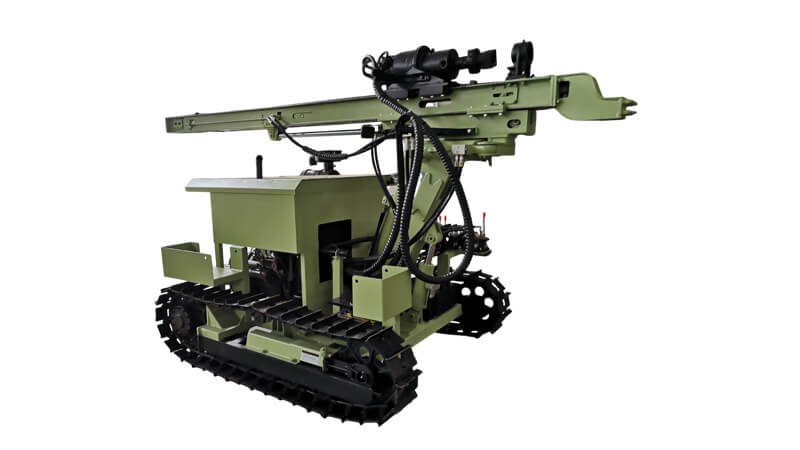
The diversity in borehole drilling machines reflects the wide range of applications. We at Hardrock manufacture several types to meet varied client needs.
- Portable/Man-Portable Rigs4: These are smaller, lighter machines, sometimes break-down models, designed for difficult-to-access locations. Ideal for shallow geotechnical investigations or water wells in remote areas.
- Truck-Mounted Rigs5: Very common for water well drilling and some geotechnical work. The rig is mounted on a truck chassis, offering good mobility on roads. This is a popular configuration for many of our clients, including engineering contractors.
- Crawler-Mounted Rigs6: These rigs are mounted on tracks, providing excellent off-road mobility and stability on uneven terrain. Essential for mining exploration, foundation drilling, and projects in challenging environments. Our geotechnical and mining exploration drilling rigs often use this setup.
- Skid-Mounted Rigs: These are mounted on a steel frame (skid) and need to be transported by truck or other means. Often used for long-duration projects where mobility is less of a concern once on site.
- Specialized Rigs: This category includes auger drills (for soft ground), sonic drills (for high-quality core samples), and reverse circulation (RC) rigs (common in mineral exploration).
The choice depends heavily on the project's depth, geology, accessibility, and budget.
How Do Different Drilling Methods Affect Machine Selection?
Using the wrong drilling method? This leads to inefficiency and failure. Match your machine to the method and ground conditions.
Drilling methods (e.g., mud rotary, air rotary, DTH, auger) dictate rig power, torque, fluid system capacity, and bit compatibility. The machine must support the chosen method effectively.
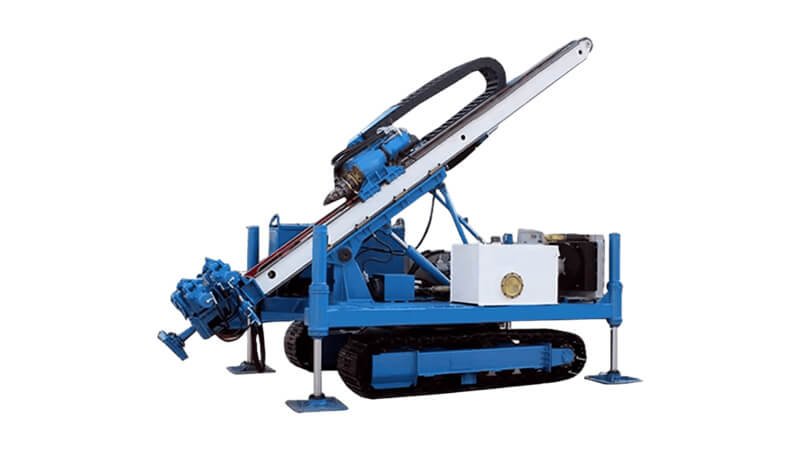
The drilling method is a primary driver in selecting the right machine. Each method has specific requirements.
- Mud Rotary Drilling: Needs a rig with a robust mud pump, a system for mud mixing and cleaning, and drill bits suited for softer to medium formations. Many of our water well drilling rigs are optimized for this.
- Air Rotary Drilling: Requires a powerful air compressor. The rig must handle higher rotation speeds sometimes used with this method.
- Down-the-Hole (DTH) Hammer Drilling: This method needs a high-pressure air compressor to drive the hammer and clear cuttings. The rig's rotary head provides rotation and feed force. This is crucial for hard rock, a specialty of Hardrock.
- Auger Drilling: Requires high torque at low speeds. The machine must be able to handle and connect auger flights. Suited for unconsolidated materials.
- Core Drilling: Focuses on sample recovery. Needs precise control over rotation and feed, often with wireline systems. Our mining exploration rigs are designed for this.
A versatile machine might handle multiple methods, but specialized rigs often perform best for a specific technique. We often discuss these trade-offs with clients like geological exploration companies.
What Are the Safety Risks?
Ignoring safety in drilling operations? This can lead to serious accidents and costly delays. Prioritize safety with proper measures.
Safety risks include entanglement in moving parts, falling objects, high-pressure fluid/air hazards, and rig instability. Management involves guards, emergency stops, PPE, operator training, and stable setup.
Safety is a paramount concern in any drilling operation. The power and forces involved mean that risks are always present. At Hardrock, we build safety features into our rigs and emphasize safe operating procedures.
- Mechanical Hazards: Rotating parts (drill string, winches, engines) are major risks. Effective guarding, clear work zones, and lock-out/tag-out procedures are essential.
- Falling Objects: Tools, drill rods, or even parts of the mast can fall. Hard hats are mandatory, and regular inspection of lifting equipment is crucial.
- High-Pressure Systems: Hydraulic hoses, air lines, and mud pumps operate at high pressures. Failures can cause serious injury. Regular inspection and proper hose routing are vital.
- Rig Stability: Setting up on uneven or unstable ground can lead to rig tipping. Proper use of outriggers and ground assessment is key.
- Operator Training: Well-trained operators are the first line of defense. They understand the machine's limits and safe practices. We provide training support.
- Personal Protective Equipment (PPE): Hard hats, safety glasses, gloves, steel-toed boots, and hearing protection are standard.
- Emergency Preparedness: Having emergency stop buttons, first aid kits, and an emergency plan is non-negotiable.
A strong safety culture, supported by machine design and operator diligence, is essential.
In What Industries Are Borehole Drilling Machines Commonly Used?
Wondering where these machines are used? Their applications are diverse and crucial. See the wide range of industries served.
Borehole drilling machines are used in water well construction, geotechnical investigation, mineral exploration, foundation piling, geothermal energy extraction, oil and gas exploration, and environmental monitoring.
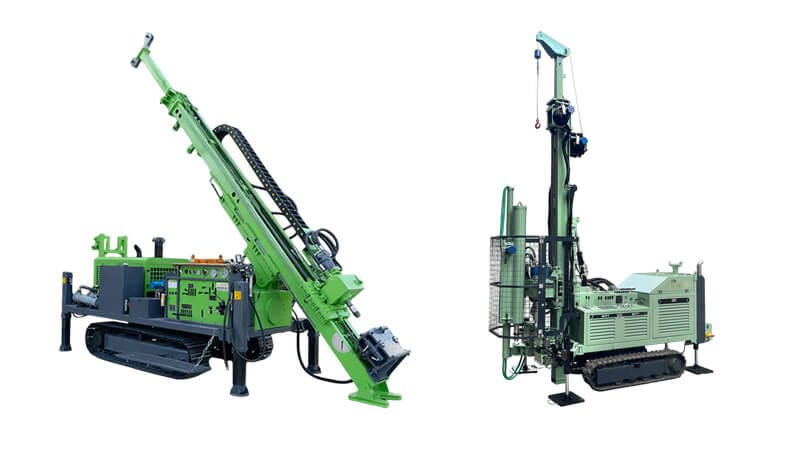
The ability to create holes deep into the earth is valuable across many sectors. Our Hardrock machines serve a wide array of these industries.
- Water Well Drilling: Perhaps the most common use, providing water for drinking, agriculture, and industry. Mohammed Al-Rahman's company in Dubai relies heavily on our water well drilling rigs.
- Geotechnical Investigation: Engineers drill boreholes to collect soil and rock samples, assessing ground conditions for construction projects. Geotechnical drilling rigs are a key product for us.
- Mineral Exploration: Used to extract core samples to determine the presence and quality of mineral deposits. Our mining exploration rigs are built for this demanding work.
- Foundation Drilling/Piling: Creating holes for piles that support large structures like bridges and tall buildings. Our foundation drilling rigs are designed for this.
- Geothermal Energy: Drilling boreholes for ground source heat pump systems. Geothermal drilling rigs help tap into this renewable energy.
- Oil and Gas Exploration: While larger rigs are used for production, smaller borehole machines can be used for shallow exploration or related services.
- Environmental Monitoring: Installing wells to monitor groundwater quality and contamination.
The versatility of borehole drilling machines makes them indispensable tools globally.
How to Choose the Right Borehole Drilling Machine for Your Project?
Feeling lost choosing a machine? A systematic approach ensures you get the best fit. Consider these key factors for success.
Choose by assessing project depth/diameter, ground geology, site accessibility, required drilling method, budget, and available after-sales support, including spare parts and technical assistance.
Selecting the right borehole drilling machine is a critical decision. I always advise clients to carefully consider several factors to ensure they get a machine that meets their needs effectively and economically.
- Drilling Depth and Diameter: What is the maximum depth and typical diameter of the boreholes you need to drill? This will dictate the rig's power, mast height, and drill string capacity.
- Geological Conditions: Will you be drilling in soft soil, mixed formations, or hard rock? This determines the appropriate drilling method (mud, air, DTH) and thus the type of rig. Our Hardrock rigs offer solutions for various geologies.
- Site Accessibility and Mobility: How will you get the rig to the site? Is it remote, on rough terrain, or in an urban area? This influences whether a truck-mounted, crawler-mounted, or portable rig is best.
- Budget: Consider not just the initial purchase price but also the total cost of ownership, including fuel, maintenance, and toolings.
- After-Sales Support: This is crucial, as Mohammed Al-Rahman would attest. Availability of spare parts, technical support, and training are vital for long-term operation. This is a strength of Hardrock.
- Versatility vs. Specialization: Do you need a rig for one specific type of job, or one that can handle a variety of tasks?
A thorough evaluation of these points will lead to a much better investment.
What Maintenance Practices Extend the Life of a Drilling Machine?
Want your rig to last longer? Proper maintenance is key, not an option. Follow best practices for extended machine life.
Regular lubrication, hydraulic system checks, engine servicing, inspection of wear parts (bits, rods), structural integrity checks, and timely replacement of worn components significantly extend machine life.
A borehole drilling machine is a significant investment, and like any heavy equipment, it requires regular maintenance to perform reliably and last long. Neglecting maintenance leads to costly breakdowns and reduced lifespan.
- Daily Checks: Before starting, operators should conduct walk-around inspections, checking fluid levels (oil, coolant, hydraulic fluid), looking for leaks, and ensuring safety guards are in place.
- Regular Lubrication: All greasing points must be lubricated according to the manufacturer's schedule. This prevents premature wear of pins, bushings, and bearings.
- Hydraulic System Care: Check hoses for wear, ensure connections are tight, and change hydraulic oil and filters as recommended. Contaminated hydraulic fluid is a major cause of component failure.
- Engine Maintenance: Follow the engine manufacturer's service schedule for oil changes, filter replacements, and inspections.
- Drill String and Bit Inspection: Regularly inspect drill rods for straightness and thread wear. Check drill bits for wear and damage.
- Structural Checks: Periodically inspect the mast, frame, and welds for any signs of stress or cracking.
- Record Keeping: Maintain a log of all maintenance activities. This helps track service intervals and identify recurring issues.
Our team at Hardrock always emphasizes the importance of these practices to customers to ensure they get the most out of our top-quality drilling rigs.
Conclusion
Understanding borehole machines, their types, operation, and maintenance is vital. Choosing wisely and maintaining well ensures project efficiency, safety, and longevity for your drilling endeavors.
-
Understanding the role of borehole drilling in geological exploration can significantly impact your project's planning and execution. ↩
-
Learn about the different types of drill bits and their specific uses in borehole drilling for better project outcomes. ↩
-
Discover the role of drilling fluid in borehole drilling, including its benefits for cooling and cuttings removal. ↩
-
Explore this link to understand the unique advantages of Portable/Man-Portable Rigs for remote drilling projects. ↩
-
Discover how Truck-Mounted Rigs enhance mobility and efficiency in water well drilling operations. ↩
-
Learn about the superior off-road capabilities of Crawler-Mounted Rigs for mining and foundation projects. ↩



